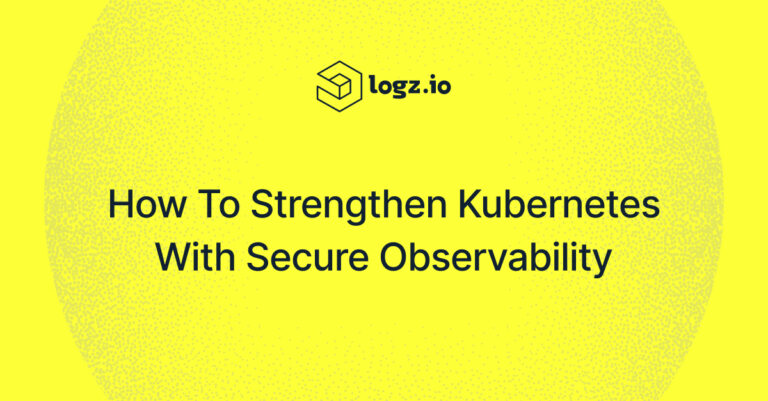
Tracing Your Steps Toward Full Kubernetes Observability
October 3, 2023

Kubernetes is one of the most important and influential technologies for building and operating software today because it’s so incredibly capable.
It’s flexible, available, resilient, scalable, feature-rich and backed by a global community of innovators — that’s a pretty impressive list of intangibles to apply to any particular capability.
At the same time, the complexity and abstraction introduced by the growing use of Kubernetes has created a daunting set of observability challenges. Distributed, ephemeral, diverse and disassociated — tackling the other side of the Kubernetes coin represents a massive endeavor.
So, what can we do to help teams address this ubiquitous and convoluted task?
The answer is clearly found in assembling, correlating and visualizing as much of the relevant data as possible in an increasingly-orchestrated fashion. That’s why Logz.io is excited to further those efforts and better deliver on our vision of a unified approach for Kubernetes by adding additional levels of distributed tracing to our Kubernetes 360 interface.
Much as Kubernetes is so helpful in automating numerous functions to speed deployment, observability systems must become more intuitive in collecting and surfacing all the crucial Kubernetes indicators needed to better inform monitoring and troubleshooting.
Distributed Tracing is a Force Multiplier for Logz.io Kubernetes 360
To repeat: What’s needed to immediately empower today’s teams to reinvent their approach to Kubernetes is a more centralized approach, wherein all the critical data is delivered in a manner providing true visibility into and control over what is happening in the environment.
Currently, many organizations are effectively combining logging and metrics to address this process, but the added use of distributed tracing most often remains a stove-piped, despite the incredible value to be gained when all three “pillars” of observability are utilized in concert – specifically in a single interface.
Since the launch of Kubernetes 360 in late 2022, we’ve seen a vast majority of our customers pounce on this capability based on their hunger for a unified approach. Many other organizations have on-boarded the Open 360™ platform based on their explicit interest in using the K8s 360 solution.
That brings us to today’s news about the new tracing additions to K8s 360. Going forward, Open 360 users will now be served with detailed lists of their system spans in the solution, with the ability to drill down into specific traces to analyze any potential issues.

Importantly, the addition of this tracing data to K8s 360 also amplifies the value of our Telemetry Collector which serves to help users get their data – in this case specifically OpenTelemetry data – into Open 360 faster than ever with increasing levels of automation.
Once the tracing data is ingested into the platform, the information will now show up in the unified K8s 360 dashboard, alongside all the adjacent information needed to maintain this centralized observability approach.
At the same time, one of the best ways to surface and investigate tracing data in the solution is through use of the K8s 360 Traces Tab, which provides detailed information regarding all the transactions moving through a specific Kubernetes resource to drill down into issues such as latency and perform the needed root cause analysis.
Digging deeper, the user can also click the “See Traces” button, which opens Jaeger with the relevant data needed to deep dive into it. Once an issue is identified and escalated for response, the process can begin all over again, starting in the main K8s 360 UI to keep hunting for emerging problems and trends.
All of this allows you to build and maintain a system-wide view of your distributed architecture, detect failed or high latency requests, and quickly drill into end-to-end call sequences of selected requests of intercommunicating K8s microservices.
K8s 360 Delivers Essential Observability
In addition to the wholesale requirement for increased aggregation and correlation of Kubernetes observability, we know that this targeted use case and UI approach allows our customers to cover more ground, making the most of their available expertise. Combined with our purpose-built cost management tools and flexible storage, we think this offers tremendous value compared to other alternatives.
As we continue to expand and refine the Open 360 platform – such as through the recent introduction of our Service Overview UI, itself another unified UI-based approach to gaining insights across your infrastructure – everything we introduce will be oriented towards this easier and more efficient strategy.
We know today’s teams need as much of the relevant observability data curated into these types of powerful UIs as possible to address complex challenges such as improving their use of Kubernetes.
If you haven’t tried K8s 360 or Logz.io Open 360 yet, sign up for a free trial today.
And stay tuned for continued platform innovation!




